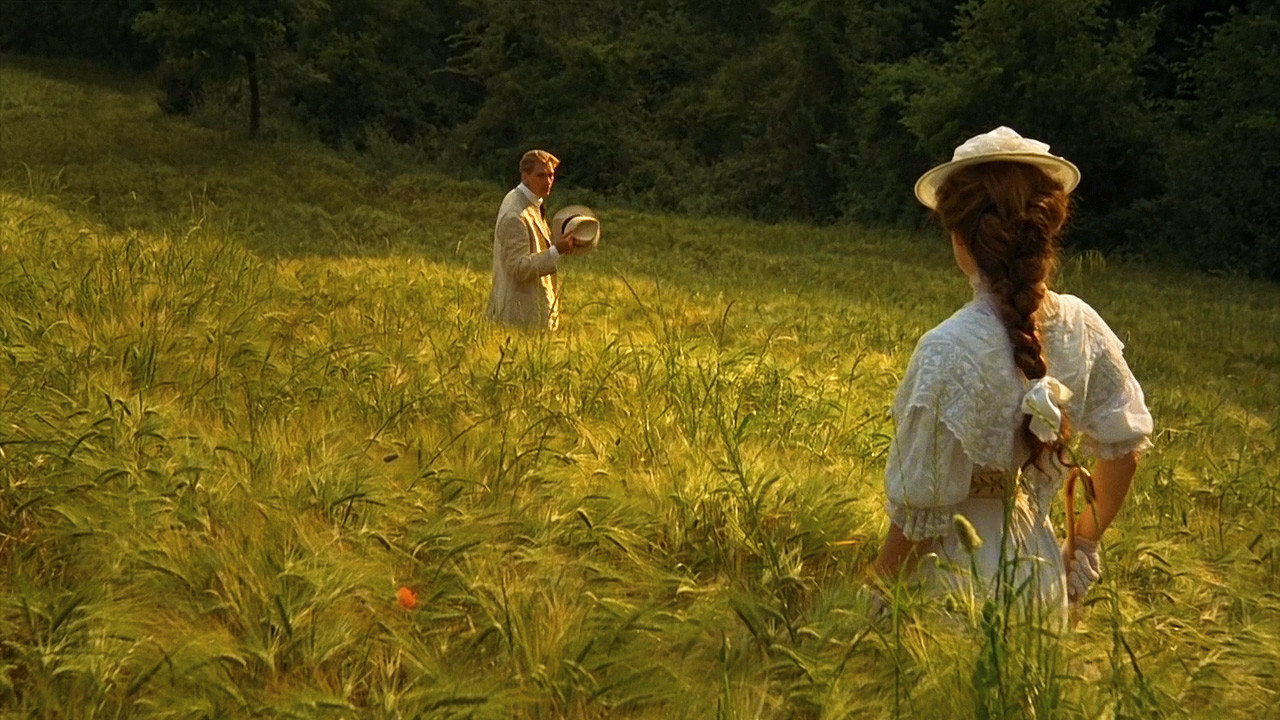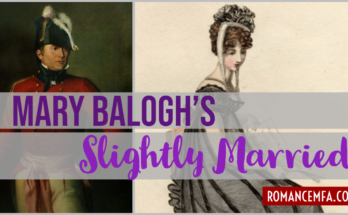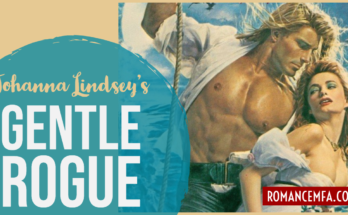A Room With A View is E.M. Forster’s classic Edwardian story of self-determination among the upper middle classes of England: those who have the funds to travel to Italy and fall in love.
Book details
Title: A Room With A View
Author: E.M. Forster
Original publication date: 1908
Setting time & place: Turn of the century Florence, Italy, and England, both country and London
He is… a philosophical and taciturn young man.
She is… a lovely young lady, fond of piano but as yet unformed in her opinions and desires.
Reasons to read this title: A literary classic as well as a love story, full of pithy turns of phrase and character description.
My review of A Room With A View
Is it a romance novel? Yes and no. Obstacles are thrown up against the couple’s happiness and overcome. We end with a marriage—the optimistic ending. However, the RWA definition calls for the ending to also be emotionally satisfying, and I didn’t find it so.
Is it a must read romance novel? It is meritorious as literature and as an example of sharp characterization but I felt that the emotional journey of the hero and heroine was lacking. If you’re interested in seeing what comes between Austen and Woodiwiss, though, it’s no hardship to read.
In high school and college I watched the film version with Helena Bonham Carter multiple times, and the movie is true enough to the novel that I actually can’t tell if I’ve read the text before or not. However, now I know more about the author and my view of the story has become…complicated.
E.M. Forster began writing this novel in 1902, shortly after finishing his college years in an atmosphere where homosexuality was illegal. During Forster’s teen years, Oscar Wilde had been tried for “gross indecency” and sentenced to two years hard labor for what his lover had euphemistically termed ‘the love that dare not speak its name’ in an 1894 poem.
With that context, it’s hard not to be profoundly sad when reading some of Forster’s narrative commentary about the importance of realizing and attaining love. Take this passage, after our heroine Lucy breaks her engagement with the man she doesn’t love and refuses to admit to anyone that it might be because she likes another man.
She gave up trying to understand herself, and joined the vast armies of the benighted, who follow neither the heart nor the brain, and march to their destiny by catch-words. The armies are full of pleasant and pious folk. But they have yielded to the only enemy that matters—the enemy within. They have sinned against passion and truth, and vain will be their strife after virtue. As the years pass, they are censured. Their pleasantry and their piety show cracks, their wit becomes cynicism, their unselfishness hypocrisy; they feel and produce discomfort wherever they go. They have sinned against Eros and against Pallas Athene, and not by any heavenly intervention, but by the ordinary course of nature, those allied deities will be avenged.
When I read this I can’t help but see it not as a character sketch or general comment on society, but as the cynical and tragic thoughts of someone who is struggling with the cognitive dissonance of being homosexual in a society which has outlawed homosexuality. Homosexual love cannot be expressed, but it is a betrayal of self not to express it. When you go into a book looking for the triumph of individuality and love, and find this subtext throughout it… The heterosexual couple in the book fumbles their way to an HEA, but I’m still all sadface emojis for Forster’s romantic prospects a century ago, and for the progress our society has yet to make.
That’s one aspect of my reading thoughts. Then, add in the information that Forster had not had any sexual experiences before the publication of A Room With A View, and the awkwardness or elision of sexual expression in the novel becomes more striking. It’s not just a hangover of Victorian mores that makes a kiss on the cheek the most scandalous thing that happens in the book, it’s also the fact that Forster has literally no idea what heterosexuals get up to. In one of the early scenes, he gives the following description.
“Oh, dear!” breathed the little old lady, and shuddered as if all the winds of heaven had entered the apartment. “Gentlemen sometimes do not realize—” Her voice faded away, but Miss Bartlett seemed to understand and a conversation developed, in which gentlemen who did not thoroughly realize played a principal part. Lucy, not realizing either, was reduced to literature.
Did Forster number himself among the “gentlemen who did not realize”? Was he thus reduced to literature? Perhaps he was at the time he was working on A Room With A View. It was only a few years after its publication, however, that he began work on Maurice, a love story between men. Despite pressure from friends who’d seen the manuscript as he reworked it through the 1960s, it was only published posthumously in 1971. By that time he’d finally had some experience in relationships with men, though apparently his first sexual experience did not come until he was nearly 40.
As a side note, I read here that Maurice was a model for D.H. Lawrence’s novel Lady Chatterly’s Lover. Later, Forster defended “Lady C” when it was on trial for obscenity. If you’ve got academic library access, here’s a 1982 article in ‘Contemporary Literature’ on “The Influence of Forster’s Maurice on Lady Chatterley’s Lover”. Now I have added those two novels to my list of things to be read after I get through the initial Romance MFA reading list!
In any case, I set out to read A Room With A View with an eye to how it fits into the romance genre, so tune in next week to look at the tropes I found—and a few that were notably missing!



